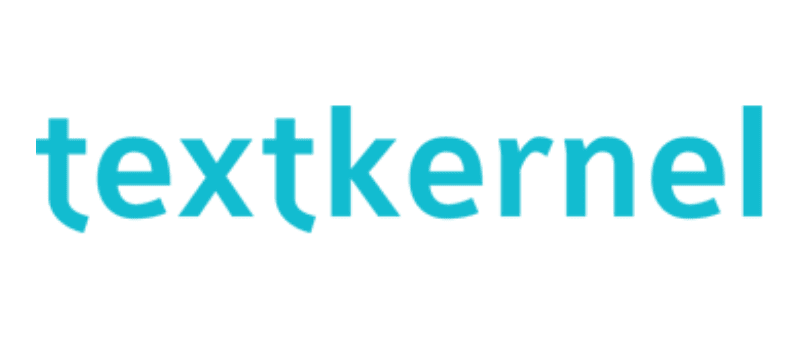AI tech for winning the talent battle
The battle for (tech) talent is not new.
What has changed is the new work context shaped by COVID-19.
Companies that were slowly adapting or reluctant to digitize have now been forced to accelerate these motions. Sink or swim.



The spectrum of strategy to execution requires technology that will support the goals of the organization and will ensure that the right people are in place.
Today, implementing AI tech that will help you win the talent battle is a must-have. In this webinar, Textkernel teamed up with UNLEASH to provide an overview of the current state of tech demand across Europe and offer concrete recommendations and best practices to remedy the challenges of high-tech talent demand.
Watch this on-demand webinar to hear from Textkernel leaders Stephan Menge, VP Sales EMEA, and Grant Telfer, Sales Director for UK and Ireland. Textkernel is a Netherlands-based talent acquisition provider matching people and jobs using machine intelligence. Together with Kate Graham, Head of Content Labs and Insights at UNLEASH, they discussed the current talent market and how you can create a technology-led strategy to improve your talent acquisition and retention outcomes. Gain a strong understanding of the state of tech talent demand and examples on how to mitigate and implement AI tech for HR at your organization. So you can win the talent battle.
Technology can unlock the tight talent market
“CEOs feel that companies aren’t recruiting as well as they could be.”
Grant Telfer, Sales Director UK and Ireland, Textkernel
Grant cites the Annual Global CEO Survey by PwC, which found that 61% of CEOs felt recruiting was not up to par. “I think that’s not down to the staff and the people recruiting – it’s down to the technology and processes in play.”
In a poll taken during the webinar, over 70% of those surveyed responded that digitally sourcing the correct candidates was at least moderately difficult. There are more jobs than job seekers with the right skills, and this discrepancy becomes even more evident in highly technical positions. Intelligent organizations are focused on addressing internal talent mobility and upskilling to address this. Still, the current skills gap remains pressing, and many talent practitioners assert that legacy technology is hurting more than helping.
The good news, according to Grant, is that this is something that can be solved with the effective application of AI. AI has been around since the 1950s, and it only became a “buzzword” in the early 21st century. Genuinely impactful applications for recruiting are even more recent. This is a fortunate development as talent leaders struggle through the so-called “War for Talent.” Like many other roles, executives find that there are simply not enough recruiters.
In the last decade or so, there has been a boom in AI and machine learning for the recruitment field. Effective technology allows you to automate processes, drill into the available information, identify skills gaps, evaluate both internal and external talent markets, and match candidates to the right roles – freeing up recruiters to focus on the human-centric processes that make your acquisition and retention strategies really shine.
You have more data than you think. Use it!
“There is an infinity loop [in talent acquisition]. You need to explain to talent how you see them developing in the organization before they’ve even started.”
Stephan Menge, VP Sales – Europe, Textkernel
Stephan argues that technology is the key to providing a comprehensive and data-driven approach throughout an employee’s time with the company, with an informed eye on upskilling, resourcing, and career pathing. With such a tight talent market, it is increasingly important to understand precisely what skills gaps you are addressing, what your organization really needs to address these gaps, and how you can provide candidates with genuine development opportunities to realize their potential in high-value roles.
It is no longer optional for organizations to approach talent haphazardly. You must assess and prepare for the entire talent lifecycle, from sourcing to exit strategy. This is especially important as internal mobility and returning employees become more common: it is critical to nurture every talent pool and find or create the employees you need, even if their experience doesn’t tick every box.
“You should be able to take unstructured data to build profiles… that’s how you can actually drive HR strategy.”
Grant Telfer, Sales Director UK and Ireland, Textkernel
Companies have access to an incredible wealth of data, which only begins with resumes and CVs. Annual reviews, reference letters, personal statements, performance reports, and training certificates can be parsed for valuable data that informs skills and candidate profiles. Many organizations use old or shallow data to identify key talent objectives. Modern solutions can help you evaluate your unused data to get to the bottom of what you need and where you might find it. This will empower you to create a talent strategy that utilizes your existing resources and takes your hiring and retention to the next level.
AI is the key to improving your outcomes
“There needs to be clearer focus on what kind of skills you need.”
Stephan Menge, VP Sales – Europe, Textkernel
According to Stephan, skills will continue to change more and more rapidly, and these are where you should begin your recruiting journey. Recruiters retain a focus on “unit” job titles, often at the expense of more nuanced approaches to talent acquisition and development. But once you create a clear skills profile and develop an understanding of the global labor market, you can recruit both internally and externally for legitimate job fit.
But this is only the beginning of where AI can help you. According to a survey of webinar participants, internal mobility was the highest priority at 32%, followed closely by improving recruiting efficiency and matching candidates to jobs. These are key areas that a great solution can improve. Many organizations struggle because their data is unevaluated, insufficiently analyzed, or inaccessible across the company. In return, they lose out on crucial improvements in their talent strategy. But strategic planning, labor market insights, matching, data management, and skills analytics can all be improved using AI and automation – and often, in one stroke.
Learn more about how AI can help you be competitive in the battle for talent by watching this on-demand webinar with Textkernel.
